Floral demonstration using a Burnt Umber underpainting over a Raw Sienna imprimatura
Using multiple references images and digital image editing software, I develop my design ideas to create a compelling composition before I start the actual painting. This allows me to focus completely on color mixing to achieve the right combination of color, value and temperature to model forms, create depth and accurately render nuances of light and shadow. Illustrated below are the progressive stages I usually follow from start to finish to complete an oil painting. This process typically takes me about two weeks for a large work, less for a small work.
Smith College Spring Bulb Show No. 4 — oil on wood panel
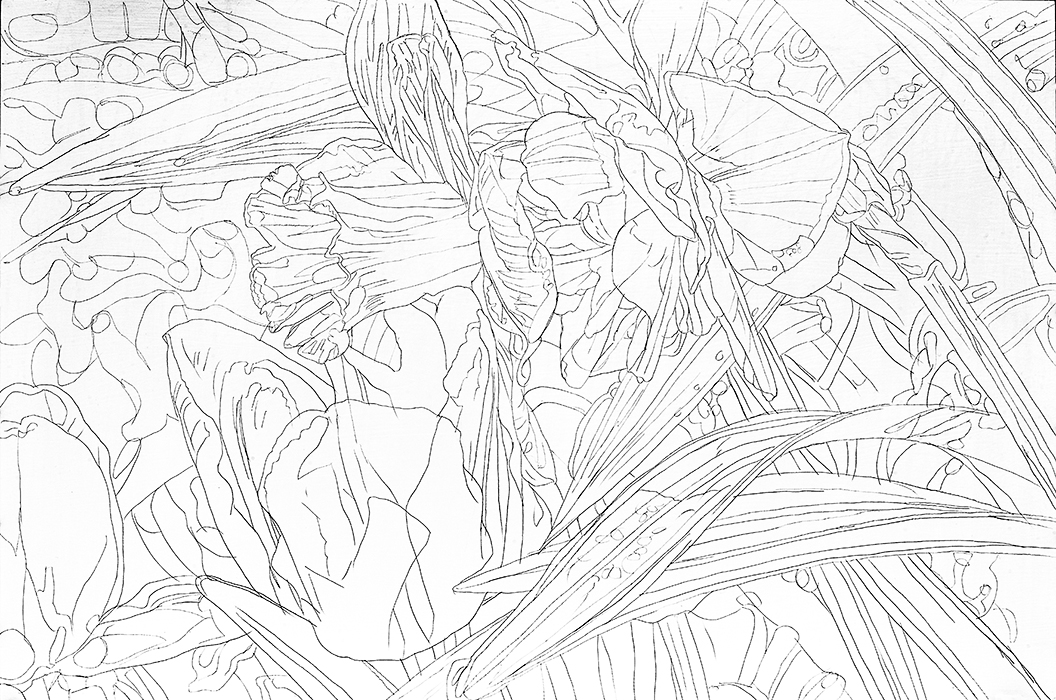
The drawing is transferred to the panel using a Cretacolor 430-08 Silverpoint Stylus via a BenQ TH670 DLP HD 1080p Digital Projector to draw key shapes and details directly onto the panel. This is the most important part of the process and may take up to three hours to complete. The drawing you see here has been adjusted to make it visible on this post. It appears much lighter on the primed panel.
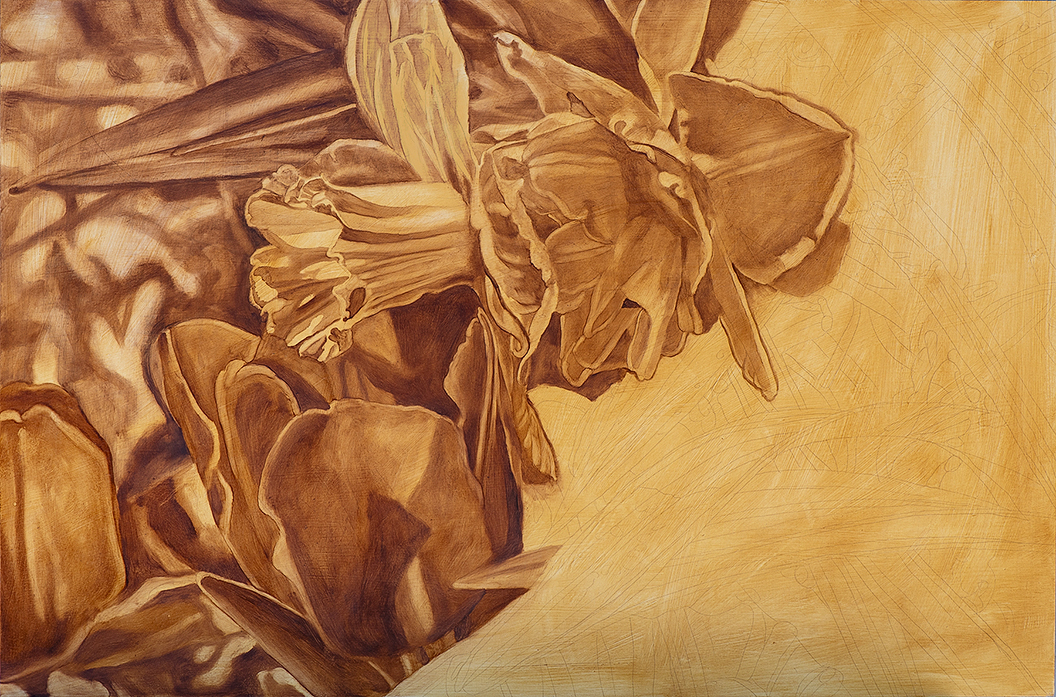
An imprimatura using Raw Sienna (Michael Harding) and a small amount to Gamsol odorless mineral spirits is applied over the drawing, which does not smudge or contaminate the surface since no graphite is used in the drawing. After drying for two or three days I begin the first underpainting session using Burnt Umber (Michael Harding) thinned with a small amount of Gamblin Solvent-Free Fluid. Gamsol odorless mineral spirits is used sparingly to remove areas of the Burnt Umber underpainting as necessary down to the Raw Sienna imprimatura. The Gamblin Solvent-Free Fluid keeps the underpainting “open” and quite fluid during the entire session without drying and paint is easily removed and reapplied and blended as necessary. The drawing, which is visible on the unpainted right side remains visible through the transparent Raw Sienna imprimatura.
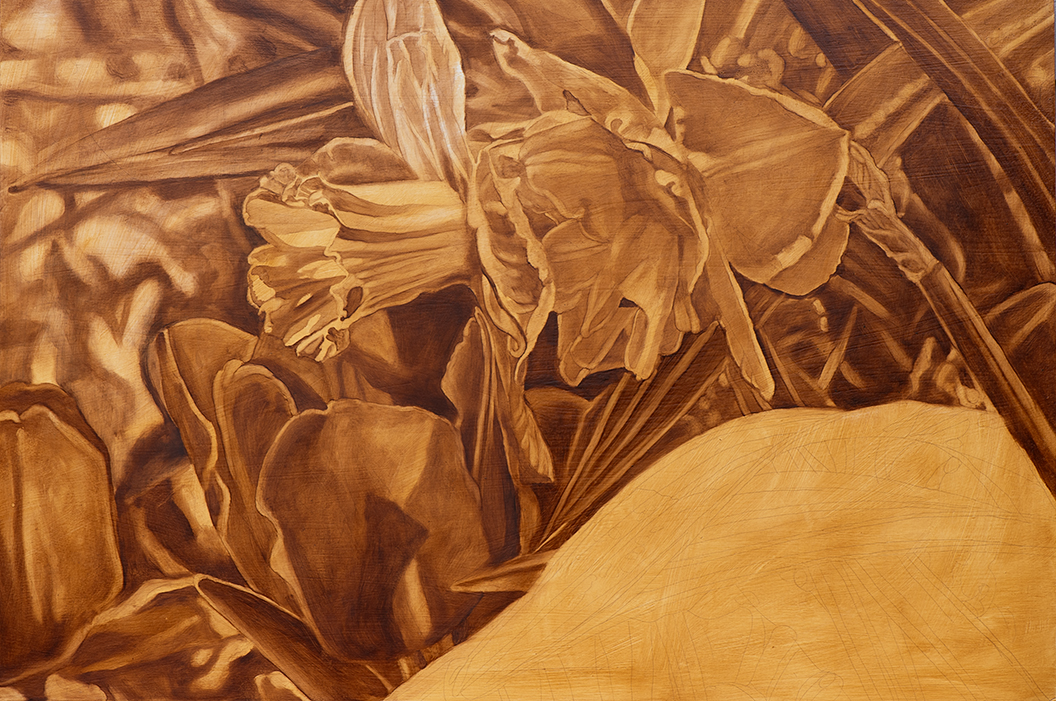
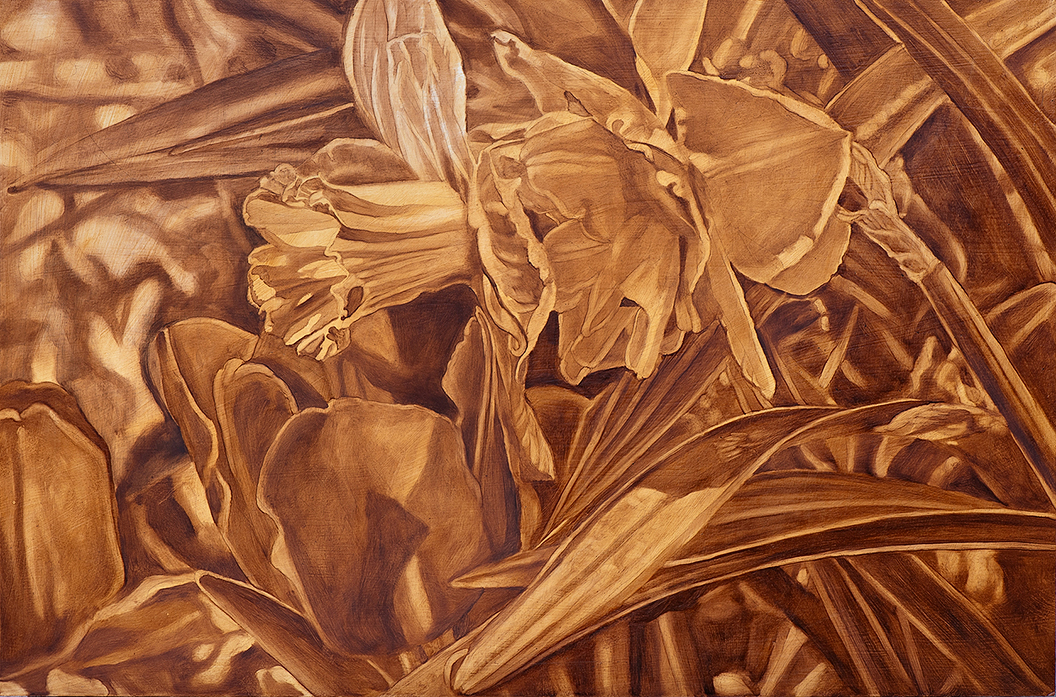
The underpainting is completed after the third session and will be left to dry for several days before beginning the overpainting. There is not a trace remaining of the silverpoint drawing underneath.
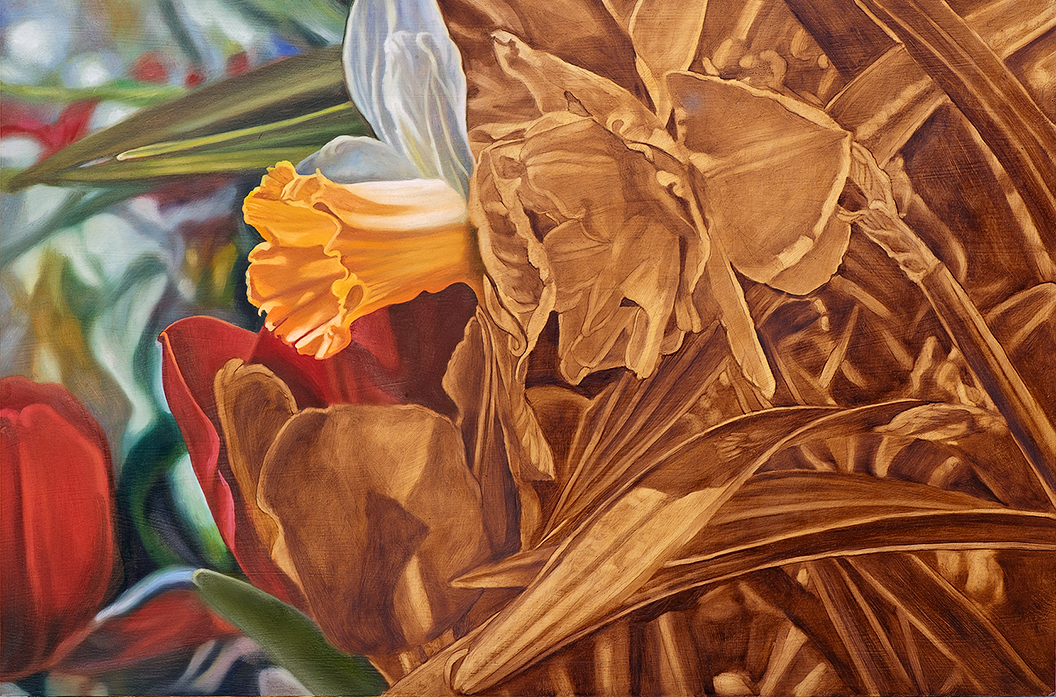
The overpainting begins using a full palette of 24 colors plus Titanium White (Lefranc Bourgeois), Flake White Replacement (Gamblin) and/or Brilliant Yellow Extra Pale (Williamsburg). My full color palette with manufacturers can be found on the Studio Notes page. I use a variety of brushes including Princeton Imperial 6600 filberts, Silver Bristlon 1901 flats, and Rosemary & Co Classic Egberts. My painting technique combines an application of “broken” color with passages carefully blended with indispensable 40-year old Pearl Paint Scenic Fitches. Painting medium for floral overpainting is Rublev’s Oleogel, an acceptable substitute for the unsurpassed Classic Medium’s Flemish Maroger, which I no longer use because of lead toxicity issues. About the only “toxic” material I continue to use is Gamsol Odorless Mineral Spirits because nothing quite seems to work as well for cleaning brushes.
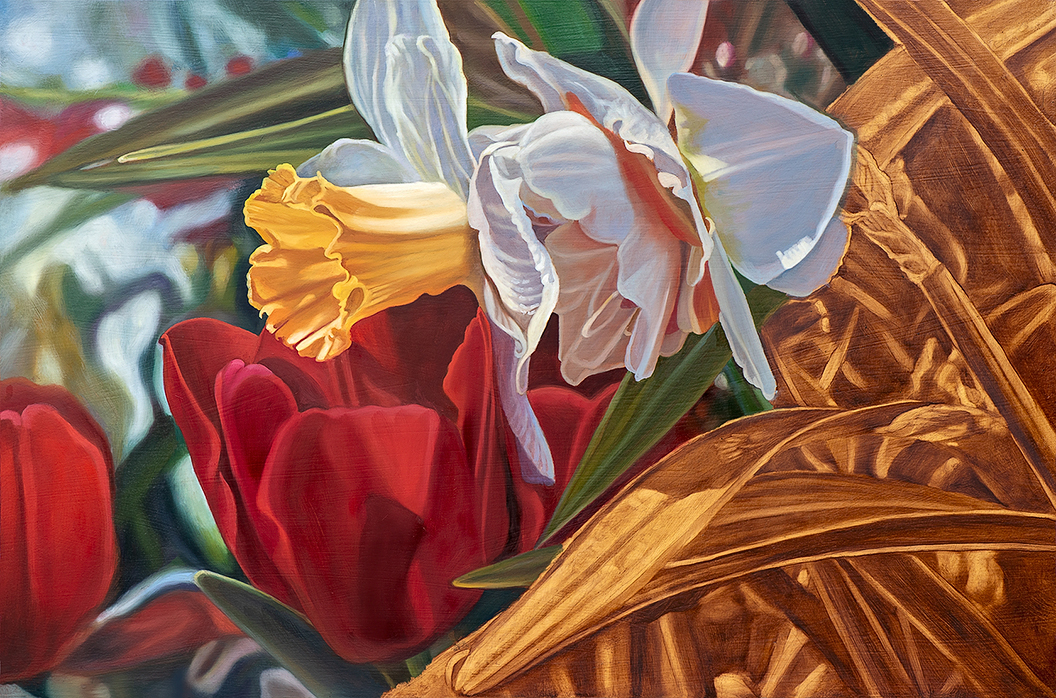
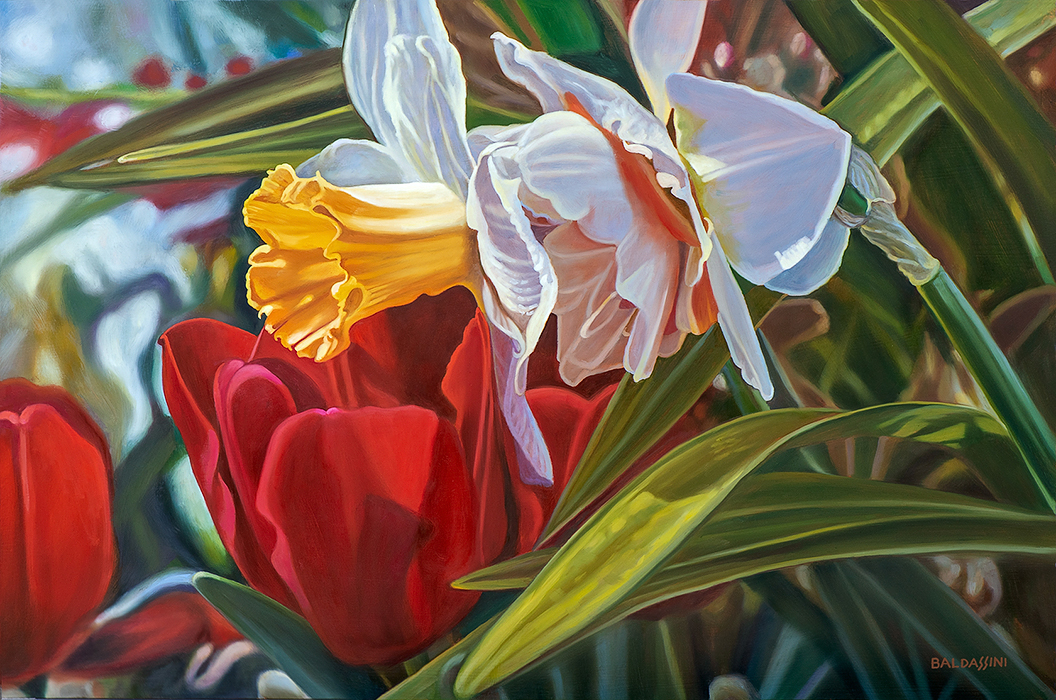
The completed painting after the third session. After drying over a period of 3 – 4 weeks one coat of Gamblin Gamvar Varnish, mixed 50-50 using both Satin and Gloss varnish is applied.